Combat aircraft. Lockheed P-38D Lightning: Best Candidate
Lightning. A very peculiar plane, which itself entered history, and its designer Clarence Johnson got his bunch of admissions.
In general, everything that Johnson designed was not quite familiar in terms of form and content. Johnson put his mind and hands to many Lockheed products, but along with the P-38, you can also add the F-104 Starfighter and the SR-71 Black Bird scout to the original.
Who will call them bad cars?
But it all started with the P-38.
Whoever says anything about Lightning, I’ll immediately announce that I consider this aircraft outstanding and simply excellent. For its time. And all that some said about the weaknesses, the chassis there wasn’t very much and the review ... About the review would send to talk with garrots flying on Hurricanes, Me-109 and Yaks.
Pilots speak best of all about airplanes. Real, and not having played "experience" in all kinds of "wartanders." And the American pilots called the Lightning “a ticket around the world,” meaning by no means some negative qualities. But first things first.
In the beginning, a small digression on a topic that I have already voiced somehow. The answer to the question "How to properly evaluate the aircraft." Just so that it would be an accurate and fair assessment, and not the Opinion of His Highness, replayed in computer games.
Disputes have not subsided for 70 years. Ratings, comparisons, ratings - all this is there. Everyone loves to talk about this topic, and experts, and not really.
But let's answer one question: by what universal parameter can we conclude how much that fighter is better than this, and vice versa? One is handsome in the vertical, the other is fast, the third has breathtaking weapons, and so on.
The list of parameters can be continued indefinitely, but each of these characteristics to some extent contradicts the others.
From here follows such a thing as Designer Art. With capital letters just out of respect for the work. And this art consists in creating an airplane in which ALL the necessary characteristics will be averaged, but present in the right amount.
In general, in each of the countries participating in the Second World War, and I also spoke about this more than once, there were specific criteria for building aircraft. Own schools of designers.
And therefore, as one "expert" here compared the Me-262 with piston aircraft of the same time ... The problems of the amateurish approach, alas, are a tribute to the present.
Personally, I liked the rating system for the price and effectiveness of the application, that is, how many of my shot down aircraft had victories over the enemy. Here, of course, not everything is smooth either, since the Germans have one thing to shoot down planes on the Eastern Front, and "flying fortresses" over Germany are completely different.
But something like this is in this system, so let's look at Lightning precisely through the prism of its success and value.
So, American pilots on American planes. And the aircraft claiming the title of the best were missing, the same Mustangs and Thunderbolts, which have already become regulars in the ratings.
However, on what plane did America's most productive pilot fly?
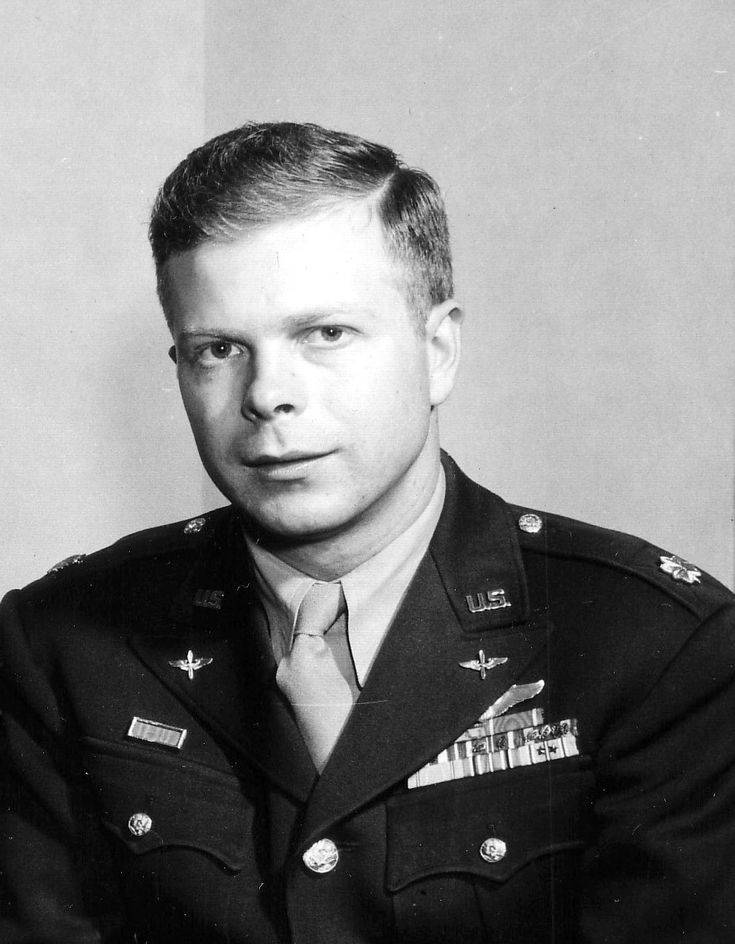
Meet Major Richard Ira Bong. 40 wins. He flew on the P-38. And who is the second? Major Thomas McGuire. 38 wins. On P-38 ... And then no less cool guys, Colonel Charles McDonald, Major Gerald Thompson, Captain Thomas Lynch ...
But even the first two pilots are enough for a serious bid to win. However, Lightning was not the most popular aircraft in the US Air Force, I agree with that. 38 groups fought on the P-27, 47 fought on the P-58 (for comparison).
And in terms of the number of cars produced, the P-38 is not the best. Total 10 thousand cars. And according to combat indicators in Europe and Africa, “Lightning” was average, data on Europe - 2500 destroyed enemy aircraft with their own losses of 1750 vehicles. So-so, huh?
But forgive me, Lightning for a very long time was generally the only aircraft capable of covering up American and British bombers. The rest, all so fast, maneuverable, cool, did not fit this role in range. And only when airfields appeared on the continent, then “Thunderbolts” and “Mustangs” spread their wings. And before that - sorry ...
How equal was the battle between Bf-109 and FW-190 against P-38? No matter how much. These were very unequal fights, anyway. And there was no way out. Either the bombers go to hell unaccompanied at all, or we have what we have. Then, when the P-47 appeared, it became a little easier, but until that moment, the American pilots fought in a frankly disadvantaged position.
But - they fought.
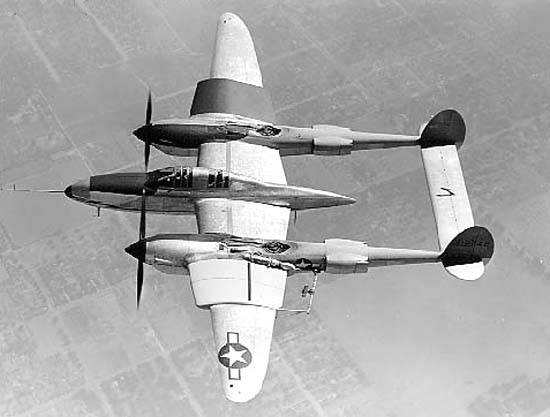
And in the Pacific, too, the situation was not the best. Not so maneuverable and high-speed R-38 against the same A6M “Zero” did not seem to look, but ... Again, only “Lightning” due to the twin-engine scheme possessed both range, flight safety, and weapons.
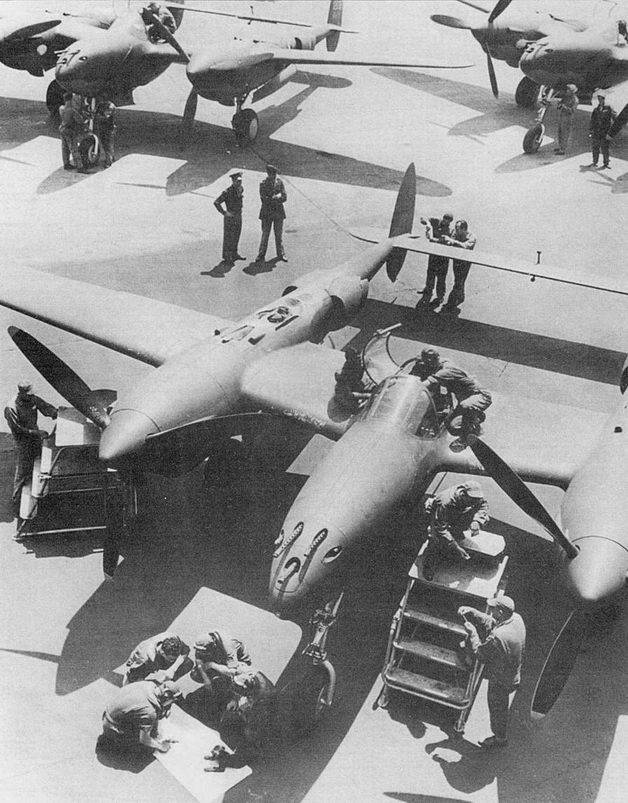
Perhaps it is appropriate to recall now that the hero of Pearl Harbor Isoroku Yamamoto was driven into the ground by the Lightings.
The design of the R-38 was quite a lot of new products, yes, “Lockheed” tried his best from the heart. No matter what the “experts” say about the extremely unsuccessful alleged landing gear, the planes flew with them, and everything around them began to take over the scheme.
In general, the scheme was very progressive and unconventional. Very good flying qualities were combined with good armament, which according to the plan was to consist of an 23-mm Madsen gun with an ammunition load of 50 shells and four Browning M2 machine guns of 12,7 mm caliber with ammunition for 200 rounds of ammunition.
Four fuel tanks with a total capacity of 1136 l were located in the center section - two in front and two behind the side member. The increase in the flight range of the P-38 was easily decided by the use of hanging tanks.
The fighter did not receive his name immediately. At first, the P-38 was called Atlanta, but the name did not take root. "Lightning" - so the British dubbed him. The choice was generally not very large. Liberator, Leeds, Liverpool, Lexington, Lincoln and Libre. Lightning liked the head of Lockheed Robert Gross, and the issue was resolved.
The first combat model received the P-38D index, although serial versions A, B and C did not exist. It was just such a tradition among Americans to start with the letter D.
Compared with the prototypes, the P-38D has improved its armor protection by increasing the thickness of the armor plates and changing the layout. Frontal bulletproof glass was also strengthened.
On this modification, they began to install protected gas tanks with a total capacity of 1287 l. Refused oxygen cylinders, they were replaced by Dewar vessels with liquid oxygen. Strange decision, but very logical. A high-pressure cylinder is not the most pleasant thing on an airplane.
P-38D aircraft were produced in series from July to October 1941.
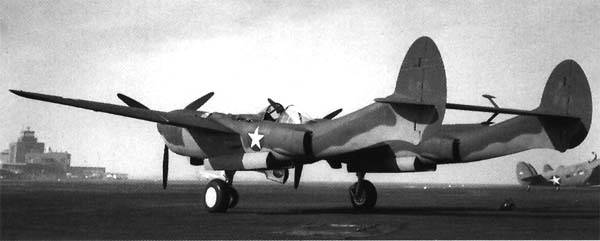
At the European theater of war, the first victory in the air at P-38D was won on 14 on August 1942 by the second lieutenant E. Shahan from the 27 th fighter squadron. He finished off a German four-engine reconnaissance aircraft FW-200 Condor, damaged by another plane.
There were export models at the beginning of the war. This aircraft was called the P-322 and was created for the UK and France based on British requirements. True, France never received its planes, as it ended. But these planes with pleasure accepted Britain.
The British and French saw in the P-322 more likely a fighter-bomber than a high-altitude interceptor, because the aircraft had a number of differences from the P-38D.
For example, less powerful Allison C-series engines without turbochargers were installed on it. Both motors had the same clockwise direction of rotation of the propellers and power in 1090 hp.
The use of these engines was dictated by the desire to simplify the maximum supply of spare parts for engines of different aircraft. Such engines have already fought in the Royal Air Force on Curtiss Tomahawk aircraft.
I had to abandon turbochargers. But the fault here is not the desire of the British to simplify the matter, but the impossibility of the General Electric company to provide compressors to everyone. Plus, it was necessary to train technical personnel in working with turbochargers, which the British could not afford during the war.
Therefore, the Royal Air Force preferred immediate deliveries of cars without turbochargers, even if this was reflected to some extent on the combat qualities of the aircraft.
The central gondola was almost identical to the gondola on the P-38, but the composition of the weapons was revised. It included only four machine guns, with English production: two 12,7 mm and two 7,69 mm. The cabin also installed standard English instrumentation and radio equipment, as well as steering controls.
In general, the P-322 was weaker than the P-38, but in 1940 it was not fat, because the British took everything they were given on the lend-lease.
Fighting on the P-322 was, of course, more difficult than fighting on the P-38, which was faster, climbed higher, flew further, and was even more armed.
It was, of course, difficult to fight. The twin-engine aircraft was quite able to turn its head to all German bombers and half of the fighters. But with the new Messerschmitt models it was difficult. And when the Focke-Wulf appeared on the Western Front, then everything became very sad. But there was no choice, because the P-38 continued to fly to escort the bombers, because everyone understood: such a cover is better than none.
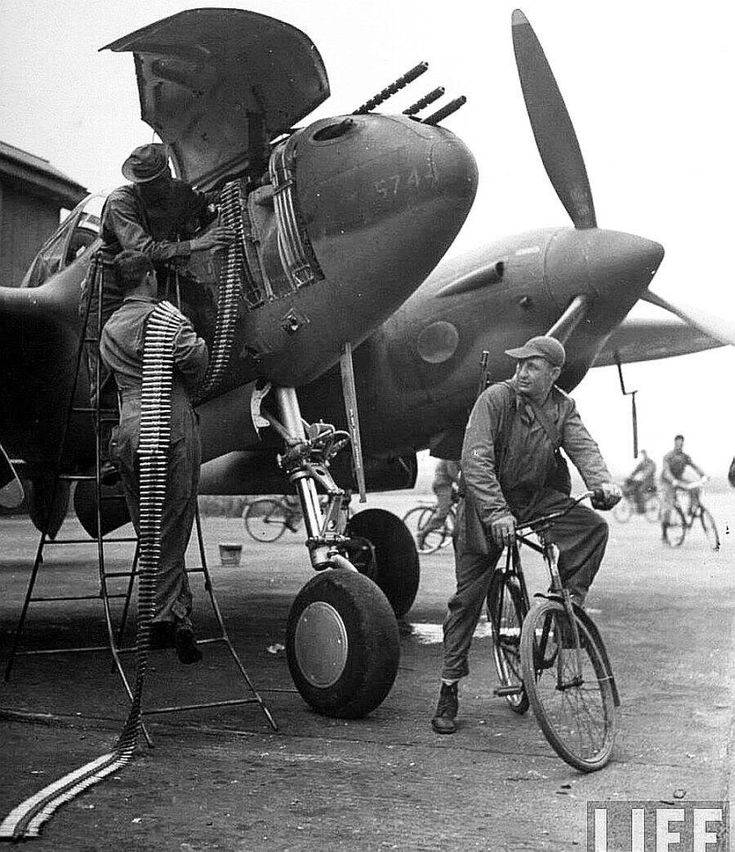
Part of the aircraft was converted into a double version. The second cabin was placed behind the first, which affected the aerodynamic purity of the gondola. Among the pilots, this design received the mocking nickname "pig’s backside." Double P-38 were used as trainers and passengers.
On one of the aircraft of modification F, missile weapons were tested - launchers for 114-mm missiles. Two three-tube packages were hung on the sides of the central nacelle and two more under the consoles. The tests were successful, but only the fuselage layout was introduced into mass production.
In 1941, Lightning fighters received only two fighter groups - 1 and 14. After the Japanese attack on Pearl Harbor, they were transferred to the West Coast of the United States in anticipation of an enemy landing. The next on the P-38 was the rearmament of the 54 Squadron 55 FG, based in Alaska. It was the pilots of this squadron who won their first victory at Lightning in the Pacific Theater, destroying the Japanese flying boat N4K6 over Dutch Harbor on August 4.
In November 1942, three P-38 groups were transferred to the Mediterranean theater of operations to participate in Operation Torch, the landing of the Anglo-American troops in Algeria and Tunisia.
Bad luck. The Americans, who had just entered the war, ran into well-trained German pilots who made chops out of these three groups. The losses were great.
However, the P-38, as an interceptor of German transport aircraft and an escort fighter, conducted the entire campaign in the Mediterranean.
Since the middle of the summer of 1943, Lightning air groups have increasingly become involved in bombing assaults against targets in the interior of the enemy’s territory. There were plenty of reasons for this.
The maximum speed of Lightning fighters of modification L was determined to be equal to 670 km / h at an altitude of 8100 m during the operation of engines on afterburner. Without boosting the motors, the 620-630 km / h speed was also more than sufficient. The aircraft gained 5000 m altitude in 5,4 minutes, and the maximum flight range with hanging tanks and 20 minute reserve for air combat reached 3370 km.
Later versions of the Lightning on the maximum bomb load were almost equal to the average bombers. After dropping bombs, the P-38J could stand up for itself in aerial combat and did not need fighter cover. In addition, the Lightning crew consisted of only one pilot, while 5-7 people flew and risked the life of an average bomber. Finally, the P-38, even with an external bomb suspension, was a relatively high-speed aircraft, the interception of which is much more difficult to organize compared to slower bombers.
In general, an almost perfect fighter-bomber really appeared.
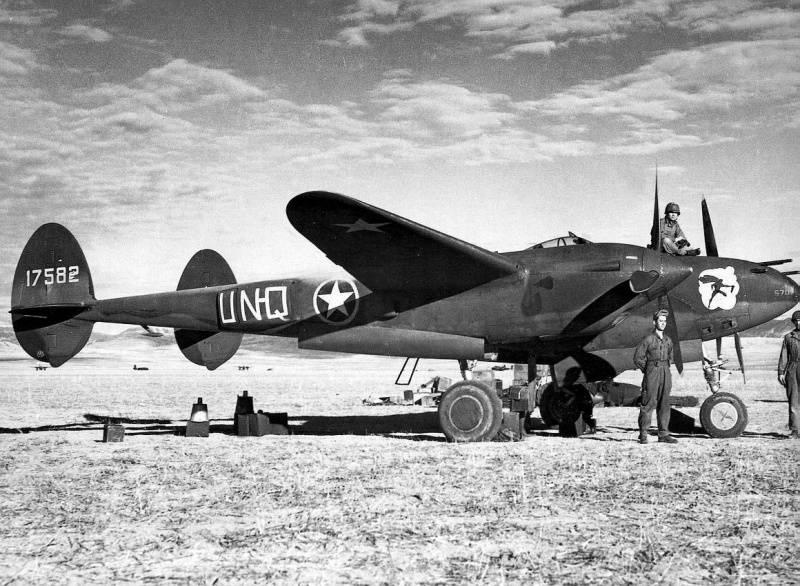
You can talk about nuances for a long time. As far as Lightning was, good or bad, but: the plane went through ALL of World War II, fighting in ALL theaters of operations. Not all aircraft of the participating countries could boast of such an effective service life.
Even when the more modern P-47 and P-51 seem to have replaced, the P-38 was still relevant. Mainly due to its flight range and carrying capacity, but nonetheless, it was useful.
Combat use showed that the aircraft was good. In all respects.
LTX P-38D
Wingspan, m: 15,85
Length, m: 11,53
Height, m: 3,91
Wing area, м2: 30,47
Weight, kg
- empty aircraft: 5 342
- normal takeoff: 6 556
- Maximum takeoff: 7 031
Engine: 2 x Allison V-1710-27 / 29 x 1150 hp
Maximum speed km / h: 628
Cruising speed, km / h: 483
Practical range, km: 1282
Rate of climb, m / min: 762
Practical ceiling, m: 11 885
Crew, prs: 1
Armament: one 20-mm gun and four 12,7-mm machine guns.
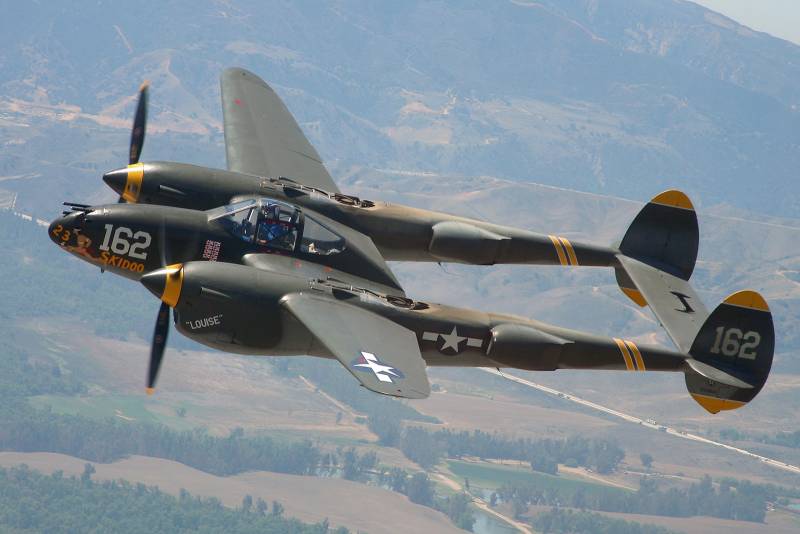
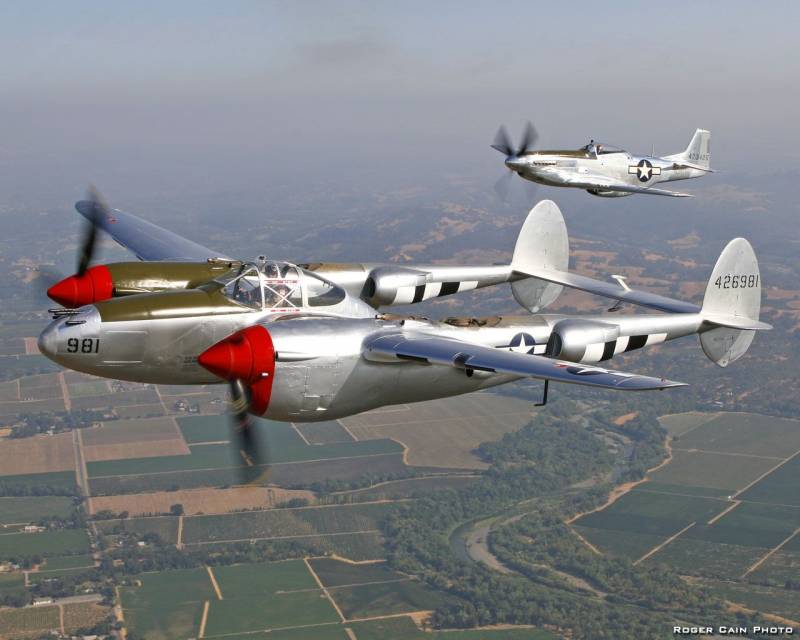
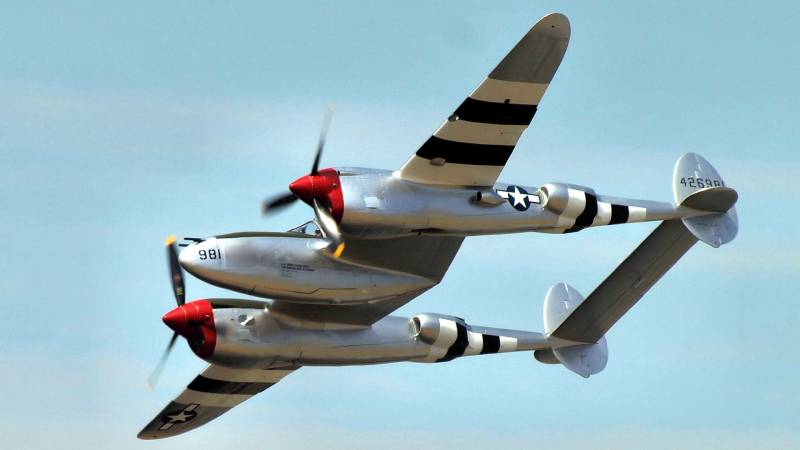
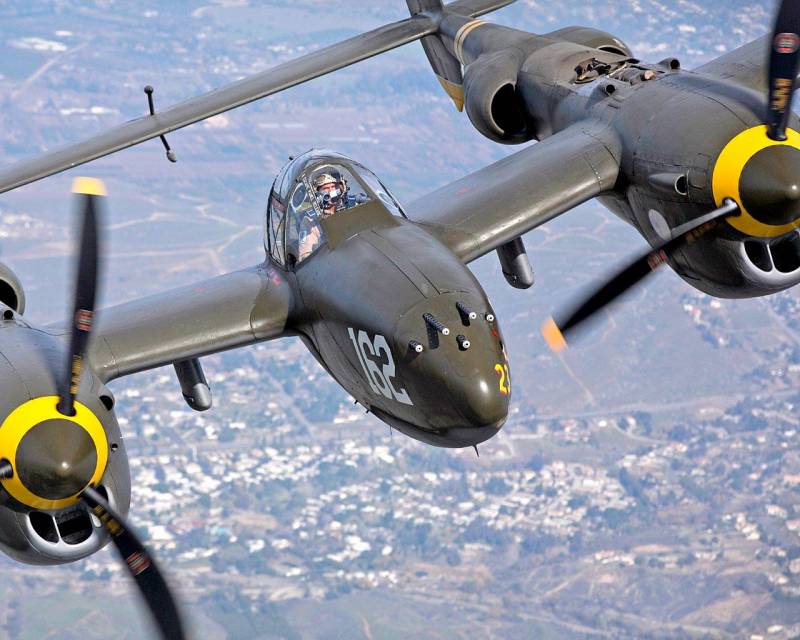
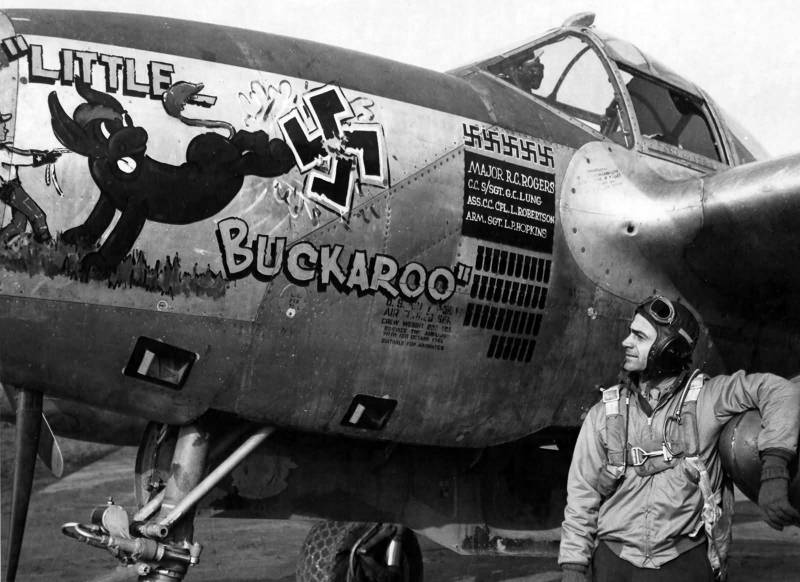
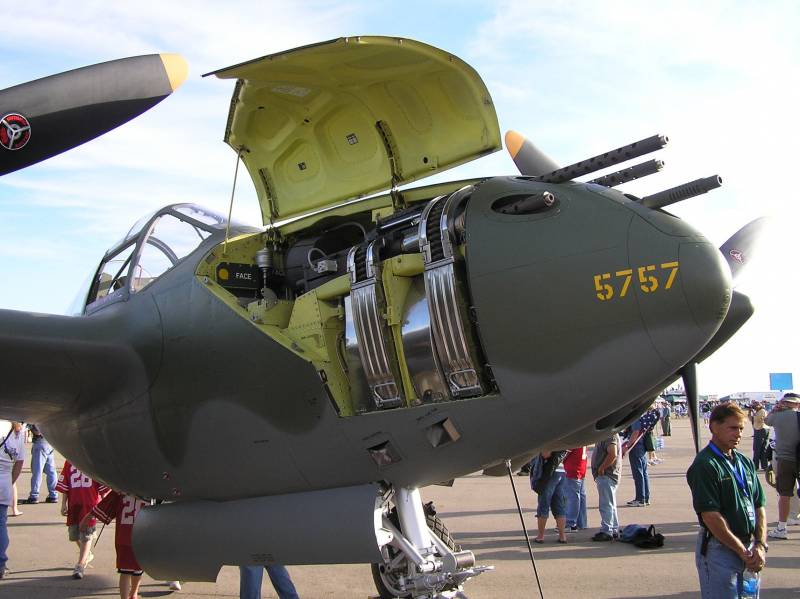
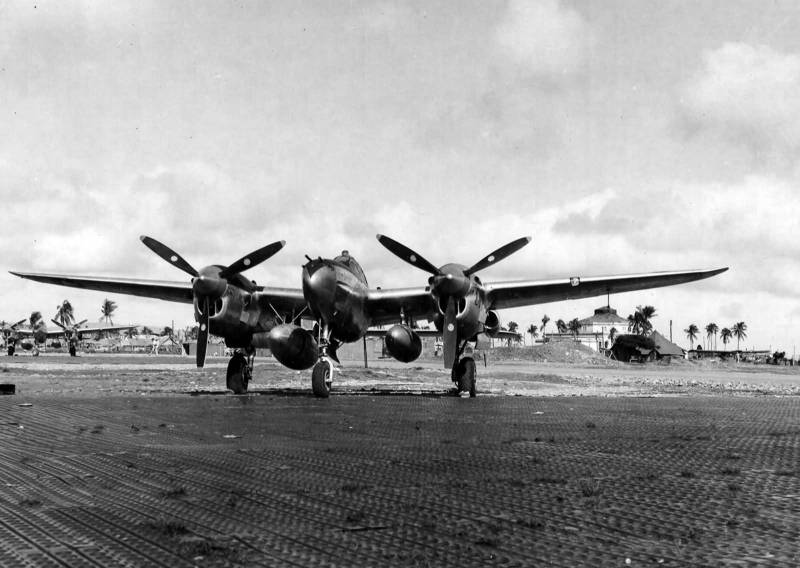
Information